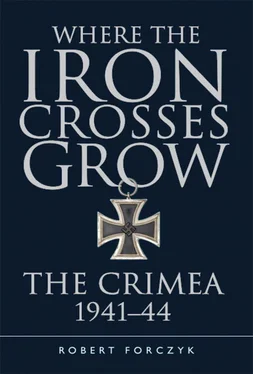Stalin was not initially concerned about the feeble nature of the Black Sea Fleet, but he changed his mind when the Turkish Government announced that it was going to modernize the battle cruiser Yavuz and purchase new destroyers and submarines from Italy. It was unacceptable to Stalin that Turkey should appear to have a superior naval force in the Black Sea, so he directed the Baltic Sea Fleet to transfer the battleship Parizhskaya Kommuna and the light cruiser Profintern there. When the Parizhskaya Kommuna arrived at Sevastopol in January 1930, it became the flagship of the Black Sea Fleet. However, Stalin was unwilling to devote any significant resources toward new naval construction while he was engaged in building up Soviet industry, and first priority went to the Red Army and then the Air Force (VVS). It was not until 1935 that Stalin authorized a naval expansion program, with two Kirov -class heavy cruisers, two Leningrad -class destroyer leaders, six Gnevny -class destroyers, and a large number of submarines intended to reinforce the Black Sea Fleet. Due to disappointing technical performance from Soviet-built destroyers, funds were even appropriated to purchase a destroyer leader from Italy, which entered the Black Sea Fleet in 1939 as the Tashkent . The Parizhskaya Kommuna was extensively modernized in 1939–40, but all of the Gangut -class dreadnoughts still lacked the firepower and protection of modern battleships. Consequently, Stalin approved construction of a new class of 59,000-ton battleships, armed with 16in guns; the one intended for the Black Sea Fleet was designated as the Sovetskaya Ukraina and was laid down at Nikolayev in October 1938. The heavy cruiser Molotov , completed in early 1941, was the first and only warship in the Black Sea Fleet equipped with air-warning radar; its Redut-K system could detect enemy aircraft at a range of 75 miles.
Vice-Admiral Filip S. Oktyabrsky took command of the Black Sea Fleet in March 1939. The 41-year-old was a product of the Stalinist purges, which had eliminated many of the more experienced Tsarist-era naval officers. Oktyabrsky came from the merchant marine and had no naval experience from either World War I or the Russian Civil War. He was given a smattering of technical and doctrinal training at the new Naval Academy in Leningrad in 1925–28, but thereafter his command experience was limited to minesweepers and motor torpedo boats. By June 1941 the Black Sea Fleet had blossomed into a considerable general-purpose force, and Oktyabrsky was responsible for a cruiser brigade, three destroyer divisions, and eight submarine divisions, which were equipped with one battleship, two heavy and four light cruisers, 17 destroyers, and 44 submarines. Nevertheless, putting a man without prior command experience of even a destroyer in charge of a fleet of this size and complexity would have a noticeable effect upon the Black Sea Fleet’s ability to perform its missions around the Crimea.
Oktyabrsky also had no prior experience with naval aviation, but he had a very powerful force in the Black Sea Fleet Navy Air Force (VVS-ChF), which had 626 aircraft. [3] Vasiliy I. Achkasov and Nikolai B. Pavlovich, Soviet Naval Operations in the Great Patriotic War 1941–1945 (Annapolis, MD: Naval Institute Press, 1981), p. 19.
The two primary missions of the VVS-ChF were to conduct maritime reconnaissance over the Black Sea and to provide fighter cover over the fleet and its bases. The VVS-ChF had 139 Beriev MBR-2 flying boats for the reconnaissance mission within the 119th Reconnaissance Regiment and six separate squadrons. Air cover for the fleet was provided by three fighter regiments equipped with a total of 140 biplane fighters (I-15bis, I-153) and 91 monoplane I-16s. A single modern MiG-1 fighter had arrived at Yevpatoriya by June 1941, but the VVS-ChF lagged behind the VVS in modernization efforts. The fighters could provide a reasonable degree of zone protection over Soviet naval bases, but their limited range and endurance inhibited their ability to cover fleet operations far from the coast. On the other hand, the VVS-ChF had a decent medium-range strike capability in its two bomber regiments, equipped with a total of 117 Ilyushin DB-3F and Tupolev SB-2 bombers, which had the range to strike targets on the Romanian coast. However, barely 20 percent of the aircrews were trained in June 1941, which greatly restricted operational capabilities at the outset of the war.
____________
In March 1910, the Tsarist regime had recognized that the defenses around the main naval base at Sevastopol were outdated. The existing coastal-defense batteries were concentrated around the harbor entrance and consisted of artillery from the 1870s and 1880s. Most batteries had limited arcs of fire and were unsuited for ground defense. The vulnerability of Port Arthur to surprise naval attack and then ground assault during the recent Russo-Japanese War influenced the Russian Navy’s decision toward a major modernization of its coastal defenses at its key bases. In particular, the Russian Admiralty became interested in replacing outdated coastal artillery with a powerful new 12in/52cal. naval gun (305mm) developed by the Obukhovskii Works in St Petersburg in 1907. The 305mm Obukhovskii could fire a 446kg shell out to a maximum range of 28 miles, and if mounted in a fully traversing turret, would be ideal for the dual coastal and ground defense role. Funds to update the coastal defenses around Sevastopol were authorized in 1911, and several smaller batteries armed with 120mm guns were completed in 1912–13. However, the main element of the coastal-defense upgrade was to construct two new batteries, each equipped with two twin Obukhovskii 305mm guns mounted in armored turrets. The Russian fortification expert, General César A. Cui (of French-Lithuanian heritage) was sent to head the project, and he selected sites for the two batteries north and south of Sevastopol. General-Major Nestor A. Buynitsky, one of the foremost Russian engineers, took over the actual construction of the two 305mm turret batteries. Cui’s design was quite sophisticated, and in addition to building the batteries, Buynitsky was also tasked with building a railroad spur for each construction site and creating a large-scale concrete manufacturing capability in situ. Despite the untimely death of Buynitsky in late 1914, work progressed fairly quickly on the southernmost 305mm battery, later designated Coastal Battery No. 35, but only the initial site preparations had been completed on the northernmost battery site, later designated Coastal Battery No. 30, before the Russian Revolution brought construction to an abrupt halt. The four massive twin-305mm turrets, each weighing over 1,000 tons, had been built by the St Petersburg Metal Works Plant during the war, but some of the guns had been removed for use in coastal defenses on the Baltic and none of the turrets had arrived in the Crimea.
Once Wrangel’s forces were driven from the Crimea, the Revolutionary Military Council was mindful of the role played by Anglo-French naval forces in intervening in the Crimea both in 1854–55 and 1918–20 and was eager to deter future reoccurrences. The council decided to resume work on the Tsarist-era coastal-defense program but initially lacked the resources to accomplish much. Virtually all of the 27 coastal batteries around Sevastopol had been rendered inoperative by the Anglo-French before they evacuated the port, and Red Army engineers were able to repair only two 152mm batteries in 1921. Construction of the two 305mm batteries languished for seven years until the council was finally able to provide sufficient resources and labor to resume work on Coastal Battery No. 35 in 1924. Four 305mm guns from the Baltic Fleet battleship Poltava , which had been damaged by fire in 1919, were recovered and mounted in the turrets manufactured in St Petersburg during the war. [4] Stephen McLaughlin, Russian and Soviet Battleships (Annapolis, MD: Naval Institute Press, 2003), p. 310.
By mid-1926, both turrets were installed in Coastal Battery No. 35 and the installation was declared operational late in 1927, even though the rangefinder and fire-control mechanisms were not installed until the mid-1930s. The battery’s command bunker and a magazine holding 800 305mm rounds were protected by 13ft of reinforced concrete, designed to withstand 16in naval gunfire. Coastal Battery No. 35 had a peacetime garrison of 234 naval personnel, but in wartime would be augmented with antiaircraft gunners and more security troops. In July 1929, Stalin visited Coastal Battery No. 35 on an inspection trip, and among his entourage was Generalmajor Werner von Blomberg, head of the Truppenamt. This was during the period of Soviet–German covert military cooperation, and Stalin wanted to impress his German visitors with Soviet defensive capabilities in the Black Sea. Stalin suggested that the battery should demonstrate its firepower by firing a 305mm round, but when informed that each projectile “cost more than a tractor,” he demurred.
Читать дальше












